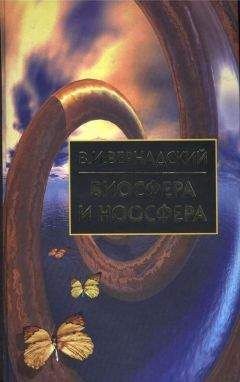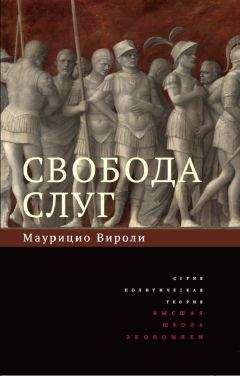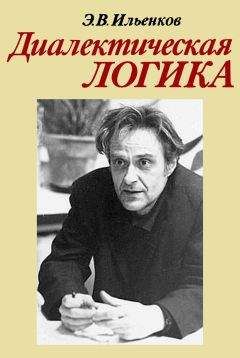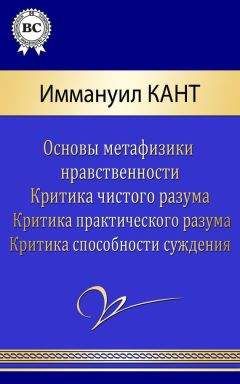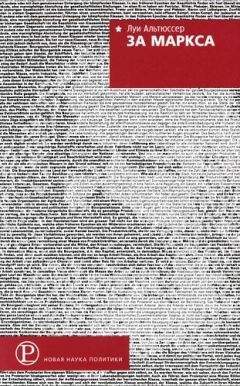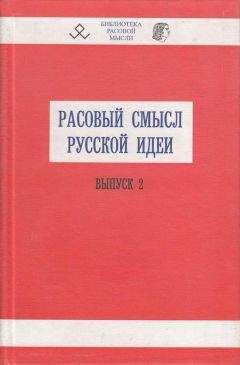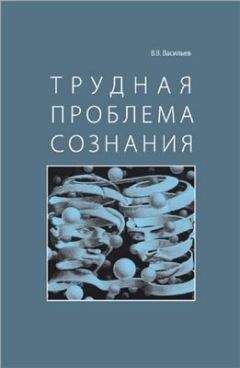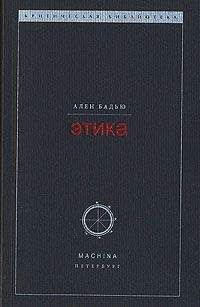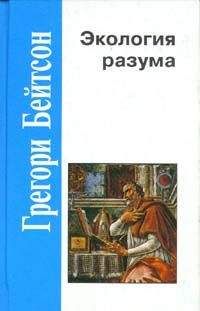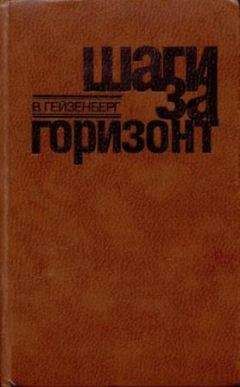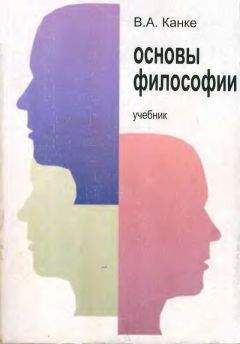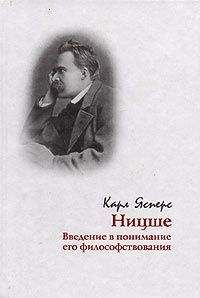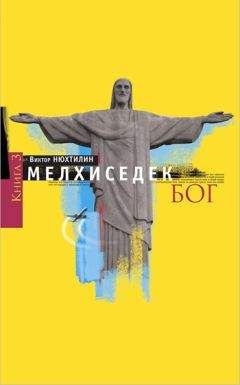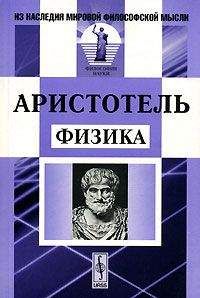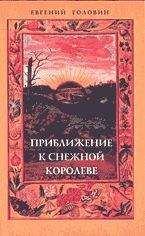Роджер Пенроуз - Тени разума. В поисках науки о сознании
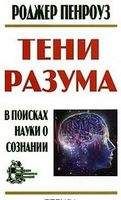
Скачивание начинается... Если скачивание не началось автоматически, пожалуйста нажмите на эту ссылку.
Жалоба
Напишите нам, и мы в срочном порядке примем меры.
Описание книги "Тени разума. В поисках науки о сознании"
Описание и краткое содержание "Тени разума. В поисках науки о сознании" читать бесплатно онлайн.
Книга знаменитого физика о современных подходах к изучению деятельности мозга, мыслительных процессов и пр. Излагаются основы математического аппарата — от классической теории (теорема Гёделя) до последних достижений, связанных с квантовыми вычислениями. Книга состоит из двух частей: в первой части обсуждается тезис о невычислимости сознания, во второй части рассматриваются вопросы физики и биологии, необходимые для понимания функционирования реального мозга.
Для широкого круга читателей, интересующихся наукой.
[249] McCulloch, W.S., Pitts, W.H. (1943). A logical calculus of the idea immanent in nervous activity. Bull. Math. Biophys., 5, 115-133. (Также в McCulloch, W. S., Embodiments of mind, MIT Press, 1965.)
[250] McDermott, D. (1990). Computation and consciousness. Behavioural and Brain Sciences, 13 (4), 676.
[251] MacLennan, B. (1990). The discomforts of dualism. Behavioural and Brain Sciences, 13 (4), 673.
[252] Majorana, E. (1932). Atomi orientati in campo magnetico variabile. Nuovo Cimento, 9, 43-50.
[253] Manaster-Ramer, A., Savitch, W.J., Zadrozny, W. (1990). Godel redux. Behavioural and Brain Sciences, 13 (4), 675.
[254] Mandelkow, E.-M., Mandelkow, F. (1994). Microtubule structure. Curr. Opinions Structural Biology, 4, 171-179.
[255] Margulis, L. (1975). Origins of eukaryotic cells. Yale University Press, New Haven, CT.
[256] Markov, A. A. (1958). The insolubility of the problem of homeomorphy. Dokl. Akad. Nauk. SSSR, 121, 218-220.
[257] Marr, D.E. (1982). Vision: a computational investigation into the human representation and processing of visual information. Freeman, San Francisco.
[258] Marshall, I.N. (1989). Consciousness and Bose-Einstein condensates. New Ideas in Psychology, 7.
[259] Mermin, D. (1985). Is the moon there when nobody looks? Reality and the quantum theory. Physics Today, 38, 38-47.
[260] Mermin, D. (1990). Simple unified form of the major no-hidden-variables theorems. Phys. Rev. Lett, 65, 3373-3376.
[261] Michie, D., Johnston, JR. (1984). The creative computer. Machine intelligence and human knowledge. Viking Penguin.
[262] Minsky, M. (1968). Matter, mind and models. В сб. Semantic information processing (ed. M. Minsky). MIT Press, Cambridge, Massachusetts.
[263] Minsky, M. (1986). The society of mind. Simon and Schuster, New York.
[264] Minsky, M., Papert, S. (1972). Perceptrons: an introduction to computational geometry. MIT Press, Cambridge, Massachusetts.
[265] Misner, C.W., Thorne, K. S., Wheeler, J. A. (1973). Gravitation. Freeman, New York.
[266] Moore, A. W. (1990). The infinite. Routledge, London.
[267] Moravec, H. (1988). Mind children: the future of robot and human intelligence. Harvard University Press, Cambridge, Massachusetts.
[268] Moravec, H. (1994). The Age of Mind: transcending the human condition through robots. Готовится к печати.
[269] Mortensen, C. (1990). The powers of machines and minds. Behavioural and Brain Sciences', 13(4), 678.
[270] Mostowski, A. (1957). Sentences undecidable in formalized arithmetic: an exposition of the theory of Kurt Godel. North-Holland, Amsterdam.
[271] Nagel, E., Newman, J. R. (1958). Godel's proof. Routledge and Kegan Paul.
[272] Newell, A., Simon, H.A. (1976). Computer science as empirical enquiry: symbols and search. Communications of the ACM, 19, 113-126.
[273] Newell, A., Young, R., Polk, T. (1993). The approach through symbols. В сб. The simulation of human intelligence (ed. D. Broadbent). Blackwell, Oxford.
[274] Newton, I. (1687). Philosophiae Naturalis Principia Mathematica. Репринт: Cambridge University Press.
[275] Newton, Г. (1730). Opticks. 1952, Dover, New York.
[276] Oakley, D.A. (ed.) (1985). Brain and mind. Methuen, London.
[277] Obermayer, K., Teich, W.G., Mahler, G. (1988). Structural basis of multistationary quantum systems. I. Effective single-particle dynamics. Phys. Rev., B37, 8096-8110.
[278] Obermayer, K., Teich, W.G., Mahler, G. (1988). Structural basis of multistationary quantum systems. II. Effective few-particle dynamics. Phys. Rev., B37, 8111-8121.
[279] Omnes, R. (1992). Consistent interpretations of quantum mechanics. Rev. Mod. Phys., 64, 339-382.
[280] Pais, A. (1991). Niels Bohr's times. Clarendon Press, Oxford.
[281] Pauling L. (1964). The hydrate microcrystal theory of general anesthesia. Anesth. Analg., 43, 1.
[282] Paz, J. P., Zurek, W.H. (1993). Environment-induced decoherence, classicality and consistency of quantum histories. Phys. Rev., D48 (6), 2728-2738.
[283] Paz, J.P., Habib, S., Zurek, W.H. (1993). Reduction of the wave packet: preferred observable and decoherence time scale. Phys. Rev., D47 (2), 3rd Series, 488-501.
[284] Pearie, P. (1976). Reduction of the state-vector by a nonlinear Schrodinger equation. Phys. Rev., D13, 857-868.
[285] Pearte, P. (1989). Combining stochastic dynamical state-vector reduction with spontaneous localization. Phys. Rev., A39, 2277-2289.
[286] Pearie, P. (1992). Relativistic model state-vector reduction. В сб. Quantum chaos — Quantum measurement, NATO Adv. Sci. Inst. Ser. С Math. Phys. Sci. 358 (Copenhagen 1991). Kluwer, Dordrecht.
[287] Peat, F.D. (1988). Superstrings and the search for the theory of everything. Contemporary Books, Chicago.
[288] Penrose, О. (1970). Foundations of statistical mechanics: a deductive treatment. Pergamon, Oxford.
[289] Penrose, O., Onsager, L. (1956). Bose-Einstein condensation and liquid helium. Phys. Rev., 104, 576-584.
[290] Penrose, R. (1980). On Schwarzschild causality — a problem for "Lorentz covariant" general relativity. В сб. Essays in general relativity (A. Taub Festschrift) (ed. F. J.Tipler), 1-12. Academic Press, New York.
[291] Penrose, R. (1987). Newton, quantum theory and reality. В сб. 300 Years of gravity (ed. S. W. Hawking, W. Israel). Cambridge University Press.
[292] Penrose, R. (1990). Author's response, Behavioural and Brain Sciences, 13 (4), 692.
[293] Penrose, R. (1991). The mass of the classical vacuum. В сб. The philosophy of vacuum (ed. S. Saunders, H. R. Brown). Clarendon Press, Oxford.
[294] Penrose, R. (1991). Response to Tony Dodd's "Godel, Penrose, and the possibility of AI". Artificial Intelligence Review, 5, 235.
[295] Penrose, R. (1993). Gravity and quantum mechanics. В сб. General relativity and gravitation 1992. Proceedings of the Thirteenth International Conference on General Relativity and Gravitation held at Cordoba, Argentina 28 June-4 July 1992. Part I: Plenary lectures (ed. R. J. Gleiser, C. N. Kozameh, O. M.Moreschi). Institute of Physics Publications, Bristol.
[296] Penrose, R. (1993). Quantum non-locality and complex reality. В сб. The Renaissance of general relativity (in honour of D.W.Sciama) (ed. G.Ellis, A.Lanza, J.Miller). Cambridge University Press.
[297] Penrose, R. (1993). Setting the scene: the claim and the issues. В сб. The simulation of human intelligence (ed. D. Broadbent). Blackwell, Oxford.
[298] Penrose, R. (1993). An emperor still without mind. Behavioural and Brain Sciences, 16, 616-622.
[299] Penrose, R. (1994). On Bell non-locality without probabilities: some curious geometry. В сб. Quantum reflections (in honour of J.S.Bell) (ed. J.Ellis, A.Amati). Cambridge University Press.
[300] Penrose, R. (1994). Non-locality and objectivity in quantum state reduction. В сб. Fundamental aspects of quantum theory (ed. J. Anandan, J. L. Safko). World Scientific, Singapore.
[301] Penrose, R., Rindler, W. (1984). Spinors and space-time, Vol. 1: Two-spinor calculus and relative fields. Cambridge University Press.
[302] Penrose, R., Rindler, W. (1986). Spinors and space-time, Vol. 2: Spinor and twistor methods in space-time geometry. Cambridge University Press.
[303] Percival, I. C. (1994). Primary state diffusion. Proc. R. Soc. Lond., А (статья отправлена в журнал).
[304] Peres, A. (1985). Reversible logic and quantum computers. Phys. Rev., A32 (6), 3266-3276.
[305] Peres, A. (1990). Incompatible results of quantum measurements. Phys. Lett., A151, 107-108.
[306] Peres, A. (1991). Two simple proofs of the Kochen—Specker theorem. /. Phys. A: Math. Gen., 24, L175-L178.
[307] Pedis, D. (1990). The emperor's old hat. Behavioural and Brain Sciences, 13 (4), 680.
[308] Planck, M. (1906). The theory of heat radiation (пер. на англ.: М. Masius, основана на лекциях, прочитанных в Берлине в 1906/1907 годах). 1959, Dover, New York.
[309] Popper, K.R., Eccles, J.R. (1977). The self and its brain. Springer International.
[310] Post, E. L. (1936). Finite combinatory processes-formulation I, Jour. Symbolic Logic, 1, 103-105.
[311] Poundstone, W. (1985). The recursive universe: cosmic complexity and the limits of scientific knowledge. Oxford University Press.
[312] Pour-El, М. В. (1974). Abstract computability and its relation to the general purpose analog computer. (Some connections between logic, differential equations and analog computers.) Trans. Amer. Math. Soc, 119, 1-28.
[313] Pour-El, M.B., Richards, I. (1979). A computable ordinary differential equation which possesses no computable solution. Ann. Math. Logic, 17, 61-90.
[314] Pour-El, M.B., Richards, I. (1981). The wave equation with computable initial data such that its unique solution is not computable. Adv. in Math., 39, 215-239.
[315] Pour-El, M.B., Richards, I. (1982). Noncomputability in models of physical phenomena. Int. J. Theor. Phys., 21, 553-555.
[316] Pour-El, M.B., Richards, I. (1989). Computability in analysis and physics. Springer-Verlag, Berlin.
[317] Pribram, К. Н. (1966). Some dimensions of remembering: steps toward a neuropsychological model of memory. В сб. Macromolecules and behaviour (ed. J. Gaito), 165-187. Academic Press, New York.
[318] Pribram, К. Н. (1975). Toward a holonomic theory of perception. В сб. Gestalttheorie in der modern psychologie (ed. S. Ertel), 161-184. Erich Wengenroth, Kohl.
[319] Pribram, К. Н. (1991). Brain and perception: holonomy and structure in figural processing. Lawrence Erlbaum Assoc, New Jersey.
[320] Putnam, H. (1960). Minds and machines. В сб. Dimensions of mind (ed. S. Hook), New York Symposium. Также в Minds and. machines (ed. A. R. Anderson), 43-59, Prentice-Hall, 1964; и в Dimensions of mind: a symposium (Proceedings of the third annual NYU Institute of Philosophy), 148-179, NYU Press, 1964.
[321] Ramon у Cajal, S. (1955). Studies on the cerebral cortex (пер. на англ.: L.M. Kroft). Lloyd-Luke, London.
[322] Redhead, M. L. G. (1987). Incompleteness, nonlocality, and realism. Clarendon Press, Oxford.
[323] Rosenblatt, F. (1962). Principles of neurodynamics. Spartan Books, New York.
[324] Roskies, A. (1990). Seeing truth or just seeming true? Behavioural and Brain Sciences, 13 (4), 682.
[325] Rosser, J.B. (1936). Extensions of some theorems of Godel and Church. Jour. Symbolic Logic, 1, 87-91.
[326] Rubel, L. A. (1985). The brain as an analog computer. /. Theoret. Neurobiol., 4,73-81.
[327] Rubel, L.A. (1988). Some mathematical limitations of the general-purpose analog computer. Adv. in Appl. Math., 9, 22-34.
[328] Rubel, L. A. (1989). Digital simulation of analog computation and Church's thesis. Jour. Symb. Logic, 54 (3), 1011-1017.
[329] Rucker, R. (1984). Infinity and the mind: the science and philosophy of the infinite. Paladin Books, Granada Publishing Ltd., London. (Первое издание: Harvester Press Ltd., 1982.)
[330] Sacks, O. (1973). Awakenings. Duckworth, London.
[331] Sacks, O. (1985). The man who mistook his wife for a hat. Duckworth, London.
[332] Sagan, L. (1967). On the origin of mitosing cells. J. Theor. Biol., 14, 225-274.
[333] Сахаров А. Д. (1967). Квантовые флуктуации вакуума в искривленном пространстве и теория гравитации (Saharov A. D. Vacuum quantum fluctuations in curved space and the theory of gravitation). Доклады Акад. наук СССР, 177, 70-71. Пер. на англ. в Sou. Phys. Doklady, 12, 1040-1041 (1968).
[334] Schrodinger, E. (1935). "Die gegenwartige Situation in der Quantenmechanik". Naturwissenschaften, 23, 807-812, 823-828, 844-849. (Пер. на англ.: J. Т. Trimmer (1980) в Proc. Amer. Phil. Soc, 124, 323-338.) Также в сб. Quantum theory and measurement (ed. J.A.Wheeler, W. H. Zurek). Princeton University Press, 1983.
[335] Schrodinger, E. (1935). Probability relations between separated systems. Proc. Camb. Phil. Soc, 31, 555-563.
[336] Schrodinger, E. (1967). "What is Life?" and "Mind and Matter". Cambridge University Press.
[337] Schroeder, M. (1991). Fractals, chaos, power laws. Minutes from an infinite paradise. Freeman, New York.
[338] Scott, A. C. (1973). Information processing in dendritic trees. Math. Bio. Sci., 18, 153-160.
[339] Scott, A. C. (1977). Neurophysics. Wiley Interscience, New York.
[340] Searle, J. R. (1980). Minds, brains and programs. В сб. The behavioral and brain sciences. Vol. 3. Cambridge University Press. (Также в сб. The mind's I (ed. D. R. Hofstadter, D.C.Dennett). Basic Books, Inc.; Penguin Books Ltd., Harmondsworth, Middlesex, 1981.)
[341] Searle, J.R. (1992). The rediscovery of the mind. MIT Press, Cambridge, Massachusetts.
[342] Seymore, J., Norwood, D. (1993). A game for life. New Scientist, 139, No. 1889, 23-26.
[343] Sheng, D., Yang, J., Gong, C, Holz, A. (1988). A new mechanism of high Tc superconductivity. Phys. Lett., A133, 193-196.
[344] Sloman, A. (1992). The emperor's real mind: review of Roger Penrose's The Emperor's New Mind. Artificial Intelligence, 56, 355-396.
[345] Smart, J. J. С (1961). Godel's theorem, Church's theorem and mechanism. Synthese, 13, 105-110.
[346] Smith, R.J.O., Stephenson, J. (1975). Computer simulation of continuous systems. Cambridge University Press.
[347] Smith, S., Watt, R.C., Hameroff, S.R. (1984). Cellular automata in cytoskeletal lattice proteins. Physica D, 10, 168-174.
[348] Smolin, L. (1993). What have we learned from non-pertubative quantum gravity? В сб. General relativity and gravitation 1992. Proceedings of the thirteenth international conference on GRG, Cordoba, Argentina (ed. R.J.Gleiser, C. N.Kozameh, O.M.Moreschi). Institute of Physics Publications, Bristol.
[349] Smolin, L. (1994). Time, structure and evolution in cosmology. В сб. Temponelle scienziae filosofia (ed. E. Agazzi). Word Scientific, Singapore.
Подписывайтесь на наши страницы в социальных сетях.
Будьте в курсе последних книжных новинок, комментируйте, обсуждайте. Мы ждём Вас!
Похожие книги на "Тени разума. В поисках науки о сознании"
Книги похожие на "Тени разума. В поисках науки о сознании" читать онлайн или скачать бесплатно полные версии.
Мы рекомендуем Вам зарегистрироваться либо войти на сайт под своим именем.
Отзывы о "Роджер Пенроуз - Тени разума. В поисках науки о сознании"
Отзывы читателей о книге "Тени разума. В поисках науки о сознании", комментарии и мнения людей о произведении.





